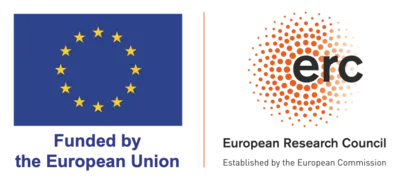- Stereochemical Editing at sp3-Hybridized Carbon Centers by Reversible, Photochemically Triggered Hydrogen Atom Transfer. Acc. Chem. Res. 58, 2025, 777-786 more…
Catalytic Light-induced Deracemization (CALIDE)

Molecules displaying a stereogenic element (center, axis, or plane) exist in two forms which are not superimposable and behave as image and mirror image. In organic molecules, the most common stereogenic element is an sp3-hybridized carbon atom with four different substituents, as for example encountered in amino acids like alanine. The phenomenon that geometrical figures cannot be brought to coincide has been termed chirality by Lord Kelvin more than a century ago. Chiral molecules play an enormously important role in all areas of the natural sciences, most notably in the life sciences [see for example: https://en.wikipedia.org/wiki/Chirality_(chemistry)]. In fact, all naturally occurring molecular devices such as enzymes, receptors, or genes are chiral and they interact differently with either enantiomer of a chiral molecule. As an example, one enantiomer of a given compound may have a beneficial, curative effect while the other enantiomer may lead to an undesired, malignant interaction. It is for this reason, that chiral drug molecules are tested as individual enantiomers and there is an increasing number of drugs being administered in enantiomerically pure form. The market for chiral compounds increases steadily and exceeds sales of 1011 € per year.
In a conventional reaction, in which an achiral substrate is converted into a chiral product, both product enantiomers are formed in a 1:1 ratio. The product is racemic and the enantiomers cannot be separated by physical techniques, such as distillation, chromatography, or recrystallization. Instead, they have to be separated by sophisticated methods involving chiral components, e.g. by chromatography on a chiral phase. Even if a separation is successful, the other enantiomer is frequently not desired and remains as waste. Asymmetric catalysis offers a possible access to enantiomerically pure compounds but the technique is not generally applicable to any given chiral product and it can be very cost intensive, both due to intrinsically high costs for the catalytic metal and due to high costs required for the synthesis of chiral ligands or organocatalysts. In search for an alternative route to enantiomerically pure compounds, deracemization methods have been proposed. The racemic mixture of a conventional reaction is taken into a process, in which it is converted selectively to a single enantiomer. The process is impossible to achieve in a thermal equilibrium, and it cannot be performed with a single conventional catalyst. In a pivotal study by our group (Nature 2018, 564, 240-243) it was shown that the boundaries of thermal reactions can be overcome by employing light.
It is the goal of the CALIDE project to devise methods, which will – for the first time – allow for the photochemical deracemization of a broad variety of compounds in a catalytic and highly selective fashion. A photochemical deracemization involves the temporary deletion of the stereogenic element and its recreation via a short-lived intermediate. An extensive research program is proposed to establish conceptually new approaches towards the deracemization of important compound classes. The project will tackle the deracemization of racemic substrates displaying an axis of chirality, a plane of chirality, or a stereogenic carbon center. It aims not only at a development of new methods but also at a fundamental understanding of the key processes involved in the individual transformations. No energy-costly resources (temperature, pressure) will be required to drive the deracemization process. Light, ideally sunlight, will be the exclusive energy source. It is envisioned that photochemical deracemization will evolve as one of the key pillars on which the future preparation of enantiomerically pure compounds will rest.
Project start: January 1, 2025